Stop overpaying - start transferring money with Ogvio. Sign up, invite friends & grab Rewards now! 🎁
JavaScript is a powerful programming language, dominating the client-side web development. It is no longer very common for developers to write pure code when many JavaScript libraries provide sets of pre-written features.

What is a JavaScript library? It is a tool for making programming less time-consuming since you can obtain pieces of JavaScript code and place it in your web application. Usually, the concepts of frameworks and libraries are synonyms, but libraries are usually smaller.
Over the years, JavaScript has become more mature, adopted a stronger ecosystem, and gathered a huge user community.
After all, JavaScript is one of the main ingredients for creating interactive content on pages and for making sure that your website is not static. The best JavaScript libraries are those that help you implement these goals on your page easier.
Table of Contents
- 1. The big 4: most popular JavaScript libraries for frontend
- 1.1. React
- 1.2. AngularJS
- 1.3. Vue.js
- 1.4. Ember.js
- 2. Less well-known JavaScript libraries to check out
- 2.1. Bideo.js
- 2.2. Anime.js
- 2.3. Parsley
- 3. JavaScript libraries for data visualization
- 3.1. Chart.js
- 3.2. ApexCharts
- 3.3. React-vis
- 4. JavaScript libraries for backend development
- 4.1. Meteor.js
- 4.2. Express.js
- 5. Choose the JavaScript Library For You
The big 4: most popular JavaScript libraries for frontend
React
React is one of the most popular JavaScript libraries that let you create complex and interactive user interfaces (UI). This library has multiple strengths and advantages when it comes to building one of the main elements of the frontend. The most evident feature of React is the components that refer to small pieces of the user interface.
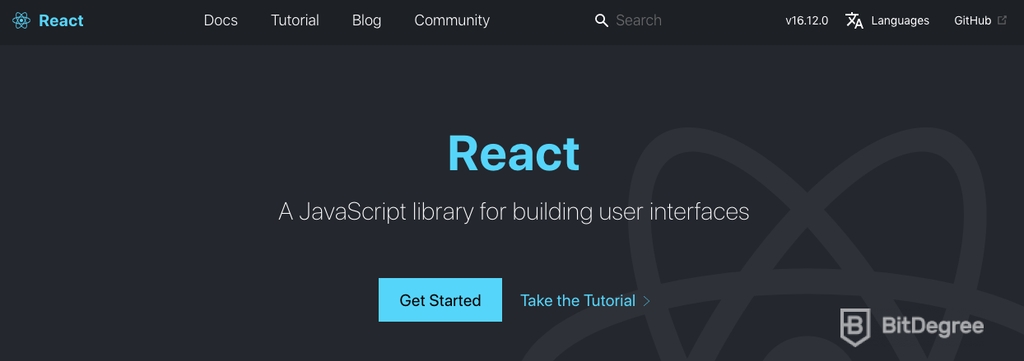
You can combine multiple independent components to build sophisticated user interfaces. As a result, developers usually get a tree of components, meaning that smaller components branch out from the main application.
Developers, especially beginners, appreciate this component stacking feature. By breaking down the UI into smaller pieces, you can work on separate components and integrate them for a more complex-looking website structure.
Learning the principles of React is not difficult. The frontend-library has convenient documentation to help you start. If you want a more guided and detailed learning experience, you can try exploring the React library with this course.
AngularJS
AngularJS is one of the Google JS libraries that provide a reliable foundation for creating interactive websites. One significant feature is that you can use Typescript for developing larger web applications. Differently than JavaScript, Typescript is a collection of JS mixed with classes and strongly-typed features.
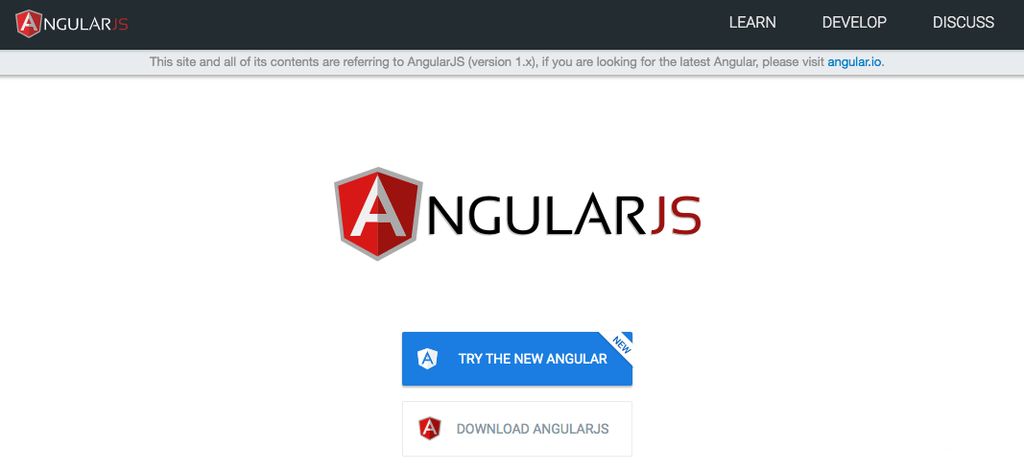
The AngularJS is an all-inclusive framework, offering high performance, many possibilities of creating simple or complex UIs, and excellent code-reusability. The framework provides many methods for achieving the same features on your website. A variety of options can be a blessing or a curse: since AngularJS is such a broad ecosystem, it might be more complicated for beginners.
When compared to React, AngularJS stands out because it is a feature-rich framework instead of a UI library. Therefore, if you use React, you will need to use a combination of libraries since it has its limits. AngularJS is one of the JavaScript libraries that let you complete most of the frontend tasks with a single, full-fledged framework.
If you are interested in learning the structure and possible implementations with AngularJS, we highly recommend this course. It provides you with information on setting up the software necessary and using this framework for creating actual web applications.
Vue.js
Vue.js is one of the lightweight JavaScript libraries that prioritize high performance and component-stacking. The latter means that you build multiple independent components and combine them to create the final product.

This library is also easy to integrate with other frameworks and libraries. Vue.js offers basic features and a compact structure. This less-is-more approach lets developers include additional components from other frameworks and libraries to enhance their applications even further.
Vue and React JavaScript libraries are similar in their management of the so-called virtual DOM. In short, this concept refers to a lightweight copy of the DOM. Therefore, you easily compare the changes in the actual DOM and the virtual DOM to see which objects are no longer the same.
Developers state that Vue is highly flexible when it comes to creating templates, and offers a beginner-friendly syntax. While it will be the beginners’ choice due to its close relation to HTML, it does not outrank React. The latter is larger, better for developing bigger applications, and offers more additional tools and add-ons.
Ember.js
One of the most popular JavaScript libraries is Ember.js. It lets developers build scalable web applications by using the best-suited approaches. The framework is especially useful for managing large projects with a group of people. Since the core of the project is based on Ember.js, it won’t be too difficult for everyone to learn the basic principles.

Furthermore, the ecosystem of Ember.js is mature and offers many additional packages (add-ons). The library also follows the convention over configuration philosophy, which indicates that best-practices are to be built into the framework. While some suggest that this puts developers in a cage, others specify the usefulness of this approach.
Another important note on this JavaScript library is that it is backward-compatible. This concept means that older versions of Ember are supported and can be updated without breaking the functionality of web projects.
Less well-known JavaScript libraries to check out
The best JavaScript libraries for you might not be the full-fledged sources of code that contain tons of features. This section reviews libraries that are not as popular, but offer some great options for enhancing websites.
Bideo.js
The Bideo.js library has a particular purpose: adding responsive full-screen videos as backgrounds of websites. Therefore, if you are looking for a quick solution for incorporating a video background, Bideo will help you add videos that adapt to various screens and orientations.

Anime.js
Anime.js is one of the simple JavaScript libraries that focus on one specific function. The library is lightweight and very easy to use for creating animations. Therefore, you should not hesitate to apply it to your projects as a modern animation engine.
The library lets users pick the start and end states, easing functions, and determine the speed of the animation as well. It is a solid option for those who wish to improve their websites with some lively animations.

Parsley
Parsley is a library for helping developers validate forms. We are not referring to the backend form validation that happens on the server. Instead, Parsley manages the validation in the frontend. For instance, it presents users with feedback on their submitted form before the application reaches the server. If users skip several required fields of the form, Parsley will help you create the structure for highlighting the missed parts.
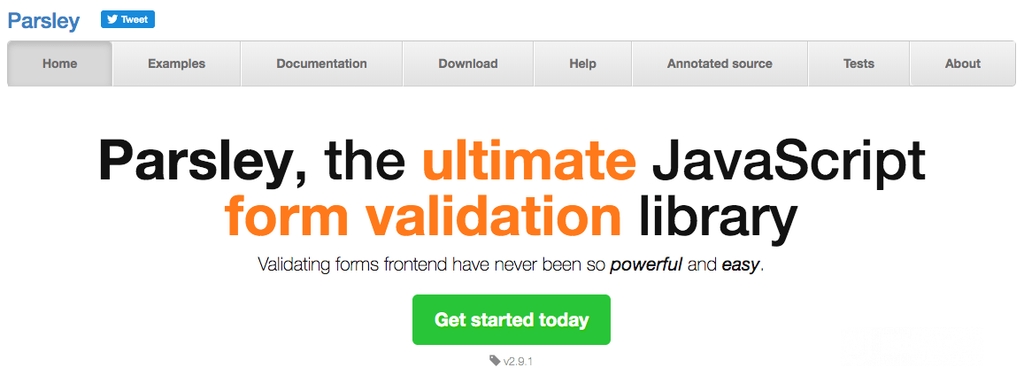
JavaScript libraries for data visualization
Chart.js
If your website is related to data analysis and presents a lot of statistical information, you cannot live without JavaScript libraries such as Chart.js. It is a lightweight framework for designing charts based on provided data. Additionally, the library has some animation capabilities, meaning that your charts will be more fun to observe by visitors.
The library is perfect for beginners, illustrates data from huge databases, and the final charts are responsive to make sure equal user experiences.
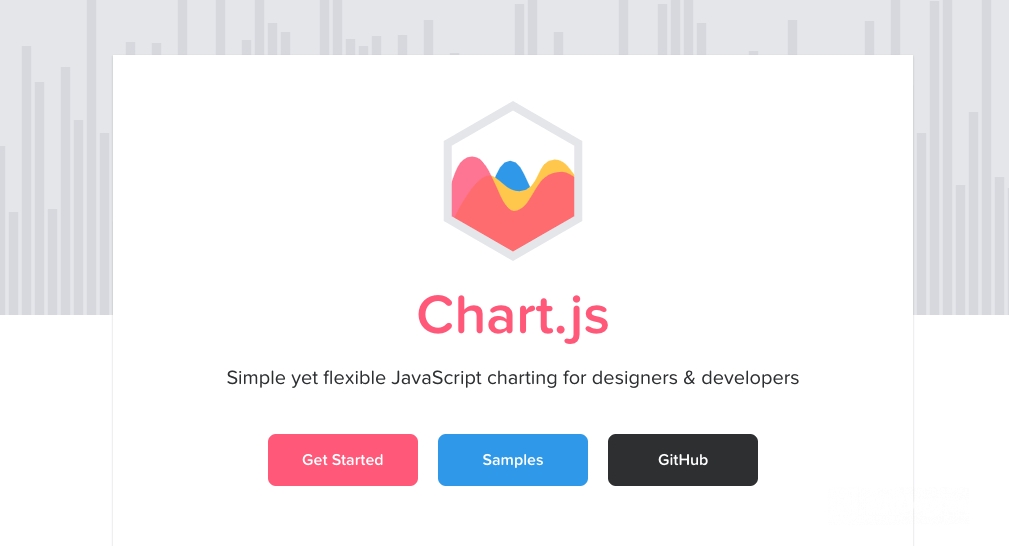
ApexCharts
ApexCharts is also one of the JavaScript visualization libraries that let you present statistical data in responsive, stylish, and accurate SVG charts. The library is often combined with React or Vue.js to enhance the features of websites further. While it is excellent for visualizing smaller datasets, you might notice some issues when trying to visualize large ones.

React-vis
React-vis is a library specifically for React. This library for data visualization is very simple to use, lightweight, and offers many types of charts (treemaps, bar charts). The library follows the less-is-more pattern and might not be fit for everybody. However, if you are looking for a simplistic style for visualizing data, React-vis is a solid option.
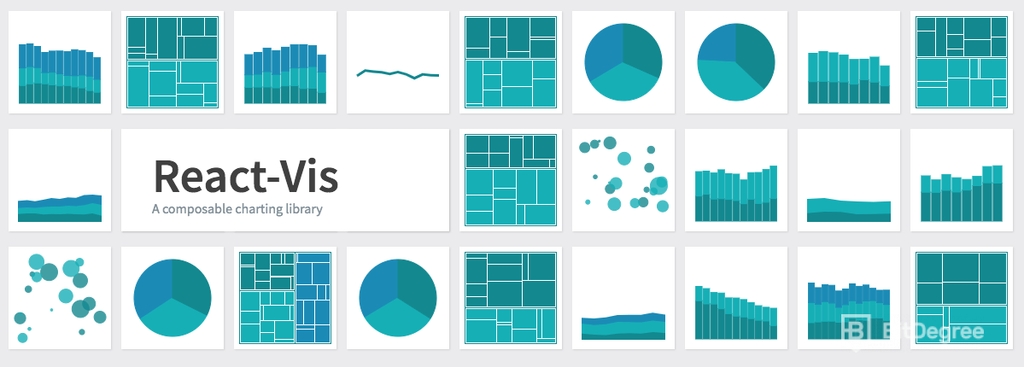
JavaScript libraries for backend development
Node.js is an open-source, cross-platform environment. It was created to let developers use JavaScript as a full-stack language: both for frontend and backend. There are many frameworks based on Node.js, and we are going to review the two most popular ones.
Meteor.js
Meteor is one of the JavaScript libraries designed for backend web development. Developers praise this library for providing many solutions for mobile and web applications, including the management of databases and other aspects related to the server logic.
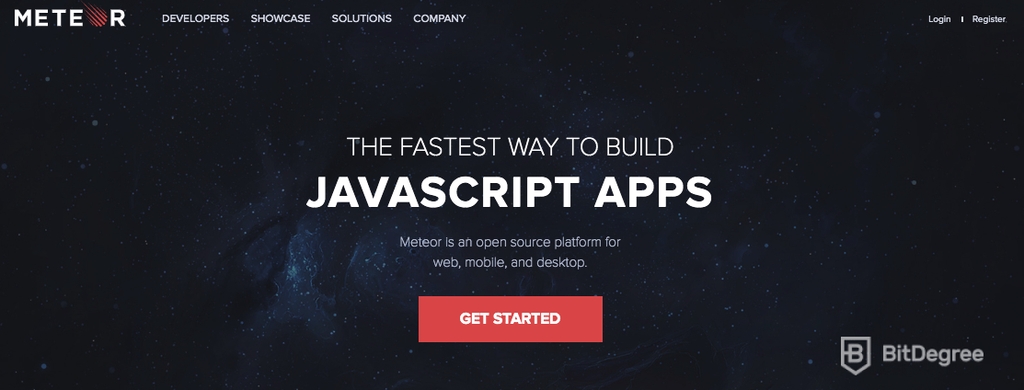
It is convenient to use Meteor.js since it is easy to integrate into other libraries for frontend development. However, on its own, Meteor.js is treated as a full-stack platform, meaning that you can handle both client-side and server-side. Additionally, this library is a solid choice for developing large-scale projects due to its high scalability. Therefore, when your project grows, its performance won’t degenerate due to the increase in data.

- Easy to use with a learn-by-doing approach
- Offers quality content
- Gamified in-browser coding experience
- Free certificates of completion
- Focused on data science skills
- Flexible learning timetable

- High-quality courses
- Nanodegree programs
- Student Career services
- Nanodegree programs
- Suitable for enterprises
- Paid certificates of completion

- A wide range of learning programs
- University-level courses
- Easy to navigate
- University-level courses
- Suitable for enterprises
- Verified certificates of completion
Express.js
Express.js is a backend JavaScript library for developing both web and mobile applications. The library has a sophisticated API structure that lets developers set routes for transferring or receiving requests between the browser and the server. Additionally, the framework is unopinionated, meaning that there is no preferred pattern for your application. You have full control, and the library won’t push any practices for you to apply.

One of the reasons why you should use Express.js is that it will smoothen the use of Node.js. For instance, Express makes the management of requests very simple.
If you are looking for a real project to practice using Express.js, we recommend trying this course. It explains how you can create an application by using this library.

Did you know?
Have you ever wondered which online learning platforms are the best for your career?
Choose the JavaScript Library For You
All in all, the use of JavaScript libraries guarantees a more robust web development. If you have a tight schedule for finishing a project, you can save time by using frameworks for creating the core of your website.
It is also an advantage that JavaScript libraries are not opinionated, meaning that they do not push any ideas about how your website should look or function. This flexibility and freedom ideas for the developer are not common for most of the PHP frameworks. Tools such as Laravel are very opinionated, meaning that developers have fewer opportunities for moving away from the approved practices or appearances.
Additionally, after the introduction of Node.js, it became possible to use JavaScript as a full-stack language. For instance, you can use Express.js for developing the server-side, and integrate frontend libraries for easier management,









